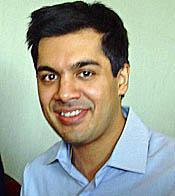小结
定义
病史和体格检查
关键诊断因素
- má qualidade do sono
- comprometimento diurno
- movimentos periódicos dos membros (principalmente as pernas)
其他诊断因素
- idade >70 anos
- representação dos sonhos durante a noite
- impulso irresistível de movimentar as pernas e sensações anormais nos membros inferiores
- ronco
- boca seca pela manhã
- cefaleia
- índice de massa corporal elevado
- supressão de benzodiazepínicos ou barbitúricos
- uso de antipsicóticos
- uso de medicamentos dopaminérgicos
- palidez
- deficiência de ferro
- diabetes mellitus
- lesão na medula espinhal
- episódios de início súbito de sono durante o dia; podem ou não estar associados à perda de tônus muscular
危险因素
- idade >70 anos
- sexo feminino
诊断性检查
首要检查
- polissonografia: avaliação por eletromiografia (EMG) dos movimentos dos membros
- polissonografia: avaliação por eletroencefalograma (EEG)
- polissonografia: avaliação de distúrbios respiratórios relacionados ao sono
- Hemograma completo
- ferritina sérica
- ureia
需考虑的检查
- actigrafia
治疗流程
TMPM primário (idiopático)
TMPM associado a outras afecções
撰稿人
作者
Tim Soane, BMBS (Hons), MSci, MRCP (Edin), PhD
Neurology Registrar
Department of Clinical Neurosciences
Western General Hospital
Edinburgh
UK
利益声明
TS has been reimbursed for attending conferences by Biogen, Roche, and Novartis.
Suvankar Pal, BSc (Hons), MBBS (Dist), MRCP (UK), MD (Res), PGCME, FHEA

Consultant Neurologist and Honorary Senior Lecturer
Department of Clinical Neurosciences
Western General Hospital
Edinburgh
UK
利益声明
SP declares that he has no competing interests.
Richard Davenport, DM, FRCP Edin

Consultant Neurologist and Honorary Senior Lecturer
Department of Clinical Neurosciences
Western General Hospital
Edinburgh
UK
利益声明
RD declares that he has no competing interests.
同行评议者
Paul Reading, MBBS
Consultant Neurologist
James Cook University Hospital
Middlesbrough
UK
利益声明
PR declares that he has no competing interests.
Karl Doghramji, MD
Director
Sleep Disorders Center
Thomas Jefferson University Hospital
Philadelphia
PA
利益声明
KD is a speaker for Sanofi-Aventis, King Pharmaceuticals, Takeda Pharmaceuticals, Sepracor, and Pfizer; a consultant for Sanofi-Aventis, Takeda Pharmaceuticals, Sepracor, Pfizer, and Neurocrine Biosciences; and has stock in Merck.
Kirstie Anderson, BMedSci, MBBS, MRCP, DPhil
Consultant Neurologist
Department of Neurology
Freeman Hospital
Newcastle upon Tyne
UK
利益声明
KA declares that she has no competing interests.
Peer reviewer acknowledgements
BMJ Best Practice topics are updated on a rolling basis in line with developments in evidence and guidance. The peer reviewers listed here have reviewed the content at least once during the history of the topic.
Disclosures
Peer reviewer affiliations and disclosures pertain to the time of the review.
参考文献
关键文献
Garcia-Borreguero D, Ferini-Strambi L, Kohnen R, et al. European guidelines on management of restless legs syndrome: report of a joint task force by the European Federation of Neurological Societies, the European Neurological Society and the European Sleep Research Society. Eur J Neurol. 2012;19:1385-1396. 摘要
Ferri R, Fulda S, Allen RP, et al. World Association of Sleep Medicine (WASM) 2016 standards for recording and scoring leg movements in polysomnograms developed by a joint task force from the International and the European Restless Legs Syndrome Study Groups (IRLSSG and EURLSSG). Sleep Med. 2016 Oct;26:86-95. 摘要
Winkelman JW, Berkowski JA, DelRosso LM, et al. Treatment of restless legs syndrome and periodic limb movement disorder: an American Academy of Sleep Medicine clinical practice guideline. J Clin Sleep Med. 2025 Jan 1;21(1):137-52.全文 摘要
参考文献
A full list of sources referenced in this topic is available to users with access to all of BMJ Best Practice.
鉴别诊断
- Epilepsia noturna
- Distúrbios respiratórios do sono
- Espasmos hipnagógicos
更多 鉴别诊断指南
- Treatment of restless legs syndrome and periodic limb movement disorder: an American Academy of Sleep Medicine clinical practice guideline
- Manual for the scoring of sleep and associated events
更多 指南患者教育信息
Apneia do sono em adultos (obstrutiva)
Insônia
更多 患者教育信息登录或订阅即可浏览 BMJ Best Practice 临床实践完整内容
内容使用需遵循免责声明